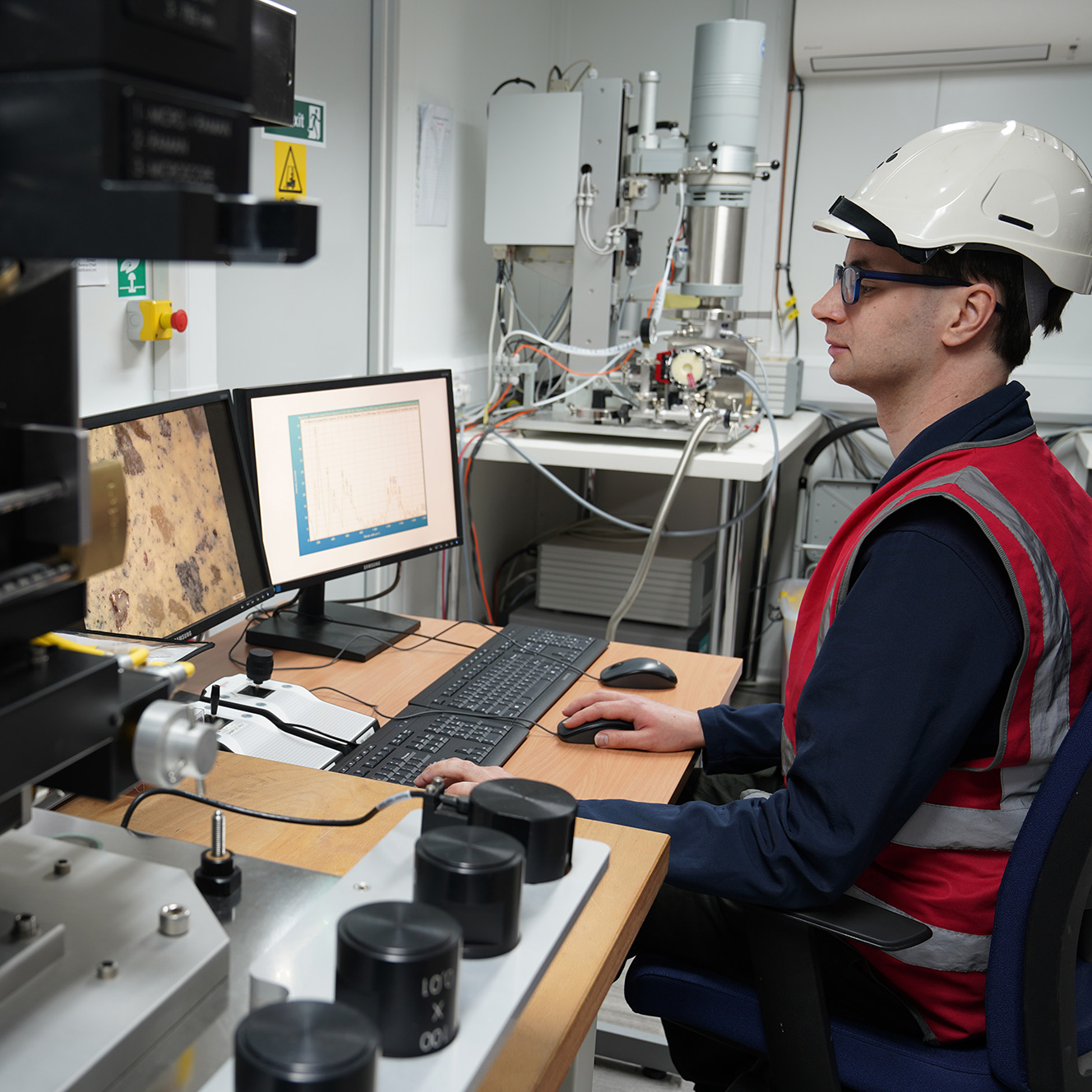
Introduction
At UKNNL Safety is our number one priority. Everyone has a role to play in maintaining high standards of safety across our business, taking responsibility for ourselves, each other and challenging unsafe practice.
This week you will learn more about our safety culture, along with the tools we use and the mechanisms we have in place to keep us safe in our day to day work.
Before getting started, watch Paul Howarth, our CEO, explain why safety is of the utmost importance to UKNNL.
Environment, Occupational Health and Safety, Security and Quality (EHSS&Q)
When it comes to health and safety, our EHSS&Q team ensure we have robust processes that mitigate risk through preventative and protective measures, continually improving our operations. You can learn more about EHSS&Q and the team by visiting Nucleus.
International Organization for Standardization
ISO Standards
The International Organization for Standardization (shortened to ISO) is an independent body composed of a wide network of experts from various fields. This allows for the sharing and pooling of expertise and knowledge across different sectors to establish best practices and essential safety information to determine the best way of carrying out specific tasks or processes.
An ISO standard essentially represents an internationally recognised approach to doing something. It ensures that everyone follows the same set of guidelines, regardless of their location, resulting in a safer and more consistent outcome. This benefits both organisations and end-users as companies can be confident that these standards are upheld and acknowledged worldwide; while customers can trust that they are receiving products or services that are safe, of high quality, and reliable.
UKNNL uses a certification body to assess every corner of UKNNL against each of our five ISO standards
How do UKNNL demonstrate compliance?
Auditors assess our Integrated Management System (IMS) and documented information through sampling and interviews with company representatives, who aim to provide sufficient evidence to demonstrate the company management system and applicable clause requirements of the standards are being effectively and routinely met.
Auditors carry out sampling across our business against the requirements of each ISO standard. Standard surveillance is 8 days per year per standard, but this increases if there is an uplift to a new standard and there could be additional days added on to accommodate major non-conformance close out.
The arrangements defined in our certificates means that anyone can be called upon to participate in an audit, so we all have a role to play in maintaining our certification against our ISO standards.
You can read more about our accredited standards on the Information Management System, just search the ISO numbers on Q-Pulse.
- QUALITY: ISO 9001
- ENVIRONMENTAL: ISO 14001
- INFORMATION TECHNOLOGY: ISO 27001
- OCCUPATIONAL HEALTH AND SAFETY: ISO 45001
- ENERGY MANAGEMENT: ISO 50001
Health and Safety concerns
We all have a responsibility for safety. The integrity of our business depends on you taking a proactive approach to health and safety.
If an immediate safety concern arises during your work, it is your responsibility to stop work and take appropriate action to report the risk straight away. Depending on the nature of your role and where you are based, the hazards you face might be very specific. Please speak to your line manager to understand what health and safety concerns you might encounter, any risk assessments you may need to follow and how to report concerns.
All incidents, accidents and near misses must be reported on OSHENS. As well as being a legal requirement, reporting enables us to investigate incidents to understand what caused them. This knowledge can be used to reduce the risk of further incidents or accidents. Reporting minor issues can help us spot trends and potentially prevent a major accident or incident.
Behavioural Observations
To support our EHSS&Q culture, we employ a technique called behavioural based observations (BBOs). The BBO process is simply about discussing positive behaviours with colleagues to increase the likelihood they will be repeated. On the BBO pages of Nucleus you can find out who your local Observation Co-Ordinator is, read about some of the latest highlights and download forms to submit your own observations.
Learn more about behavioural observations by completing NS0181 Behavioural Observations e-learning.
Behavioural Observations activities

Emergency text service
We operate an emergency text alert service where you will be notified of any significant event at one of our sites that may impact working arrangements. To join the service, email engagement@uknnl.com with your mobile number.
Fire Safety
Task Observations
A task observation is a short self-audit of an UKNNL task, process or system. It aims to compare how things should be done with the reality of how things are being done. It aims to uncover error traps and help identify improvement in practice, testing the quality of our procedures, instructions and processes. Anyone can complete a task observation – you don’t have to be a senior manager or team leader and any process can be observed.
You can read about the task observation process on Q-Pulse IMS-P-237 Task Observations and by visiting the Task Observation page in Nucleus. You can also find guidance about what to observe when carrying out a task observation on Q-Pulse IMS-P-237-APP1.

Working Safely with Display Screen Equipment
Display screen equipment (DSE) such as PCs, laptops and tablets come with associated health risks and health and safety regulations apply to workers who use DSE daily for continuous periods of an hour or more.
Complete NN0587 DSE Workstation Assessment on e-learning to learn how to set up your workstation. You can also read more about the safe use of DSE on Q-Pulse IMS-P-336 The Safe Use of Display Screen Equipment.
Medical Information on Business World
Some roles require regular medicals to ensure compliance with legal and site medical requirements. All medicals (excluding pre-employment medicals) are recorded and managed in Business World to demonstrate compliance to regulators, accreditors and hosts of our sites. You can view your medical information on Business World, under Your Employment and Personnel Information. Simply click on the medical tab to view the information.
When your medical is due to expire, you and your line manager will receive an alert from business world letting you know you need to arrange a new medical. It’s your responsibility to ensure that your medical information is up-to-date, and you are fit to work. If you are a line manager, you can edit medical information and have more responsibilities on managing medicals. Read about your responsibilities in IMS-I-110 Management of Medicals on Q-Pulse.
Driving for work
If you feel you may need to drive for company business (i.e. travel outside of the normal commute to work) you must read the Safe Driving Policy (IMS-P-140) on Q-Pulse. With safety at the core of everything we do, the Safe Driving Policy has been developed to ensure that any risk associated with driving for company business is reduced or eliminated. Any driving requirement should be discussed first with your line manager to understand if the trip is required, explore alternative means of travel and if there are other solutions available, such as meeting online. If there is a need to drive, you must verify your driving licence by following the instructions in IMS-I-087 Driving Licence Verification Process.
Due to the high-risk nature of driving, UKNNL strongly recommends the use of hire cars which can be booked through Enterprise. Hire cars have rigorous safety checks which are carried out before use – these standards are less likely to be applied to your own car before use. However, we recognise it may not be practical, sensible or cost effective to hire a car (for example, if you are travelling from Sellafield to Workington) and you should take a pragmatic approach in these circumstances. If you are using your own car, you must have the appropriate business insurance. You can find out more about how to hire a car along with information about driving for work by visiting the Driving on Company Business page on Nucleus, under the Useful Links menu.
Glossary
Environment, Occupational Health and Safety, Security and Quality (EHSS&Q)
The Environment, Occupational Health and Safety, Security and Quality team who provide expert advice to the business and drive occupational health and safety improvements.
Behavioural Based Observation (BBO’s)
Observation techniques whereby colleagues discuss each other's behaviour and give constructive feedback to reinforce positive behaviours and discourage negative behaviours.
Task Observations
A short self-observation of a task or process aimed at identifying error traps or areas for improvement.
Display Screen Equipment (DSE)
Equipment such as PCs, laptops, tablets and mobile devices etc.
OSHENS
Our event reporting system, pronounced OH-SHENS. To ‘raise an OSHENS’ is to log an event on the system.
Management System
The management system holds documentation that helps run our business. You might hear the phrase ‘check the management system’ this simply means to look on Q-Pulse. Both are used interchangeably.
End of week checklist and further activities
To continue your progress, consider these questions:
- Speak to your line manager to see if there’s any specific safety measures or procedures you might need to follow in your role.

.png)